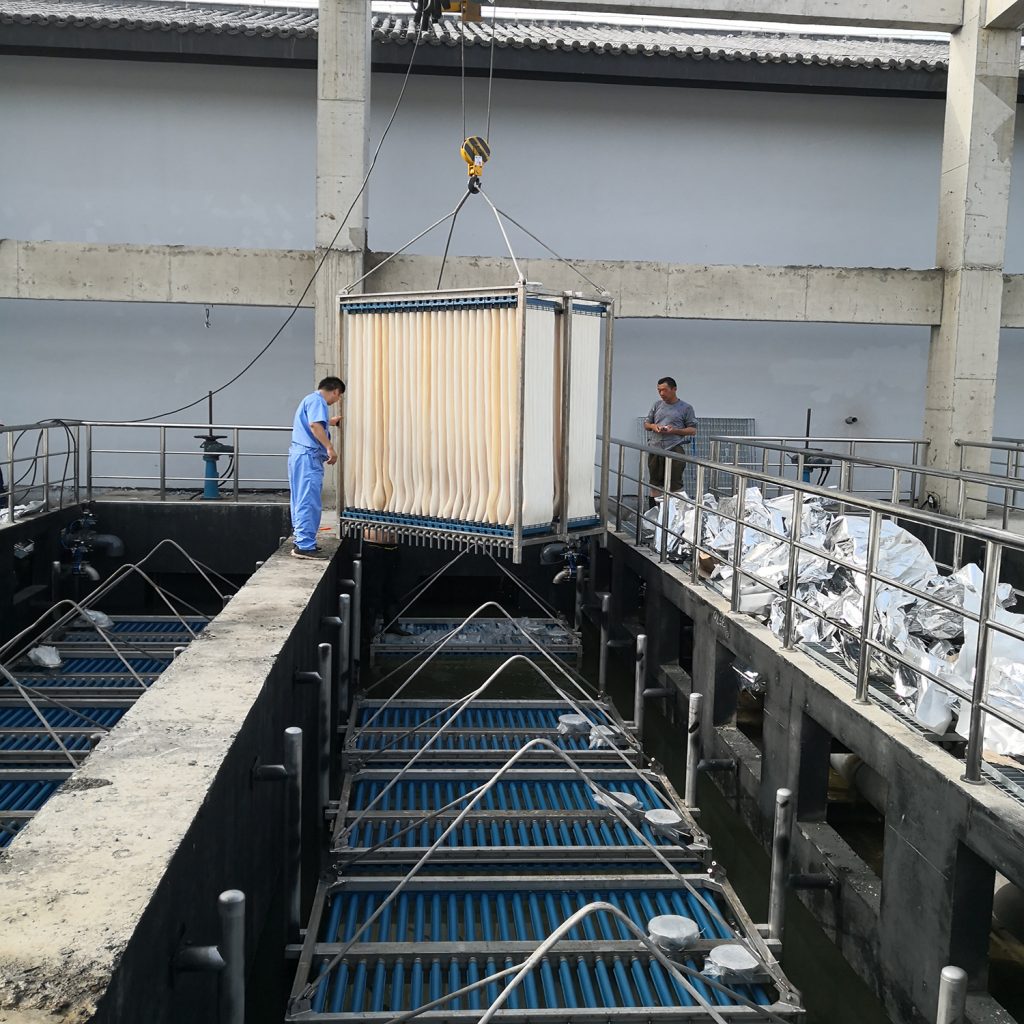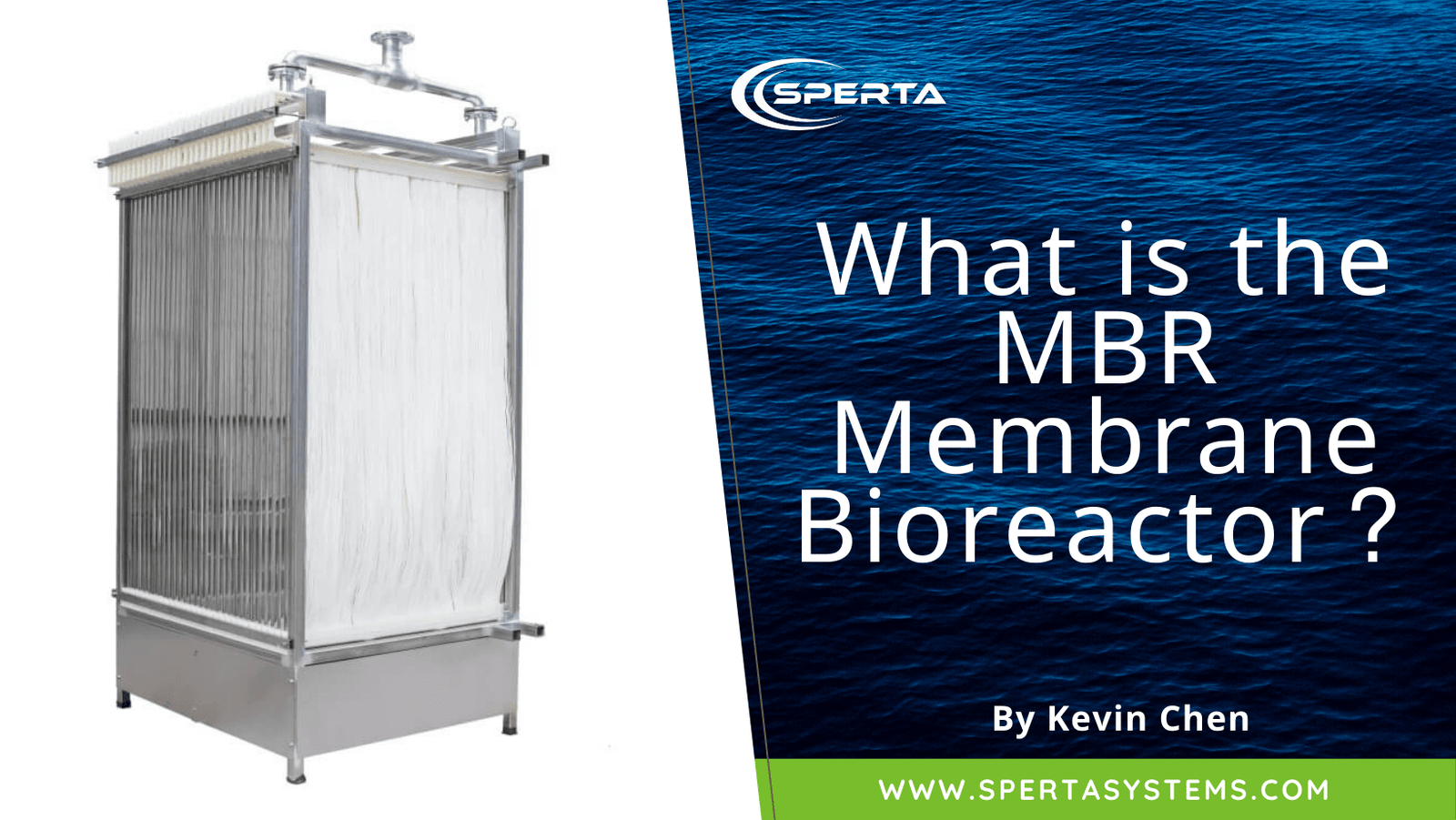Recognizing Membrane Bioreactors: The Future of Wastewater Treatment
Membrane layer bioreactors (MBRs) represent a significant innovation in the area of wastewater therapy, integrating biological procedures with advanced membrane filtration to improve effluent quality. As international water deficiency and stringent regulatory structures end up being significantly pushing problems, MBR technology provides an efficient reaction with its capacity to lessen impact and enhance source recuperation.
What Are Membrane Bioreactors?

The core elements of MBR systems include a bioreactor where microbial activity happens and a membrane layer system that filterings system the blended alcohol. This twin capability makes it possible for the simultaneous degradation of organic matter and solid-liquid separation in a single step. MBRs can operate in both submerged and external configurations, with submerged systems being much more typical because of their compact design and operational efficiency.
The adoption of MBR technology has gained traction in various applications, varying from metropolitan wastewater therapy to commercial effluent administration. MBRs are especially beneficial in scenarios where space is stringent or minimal effluent top quality requirements need to be satisfied. By maintaining a high focus of microbes within the bioreactor, MBRs improve the degradation of organic pollutants, therefore producing higher treatment performances contrasted to conventional methods.
Secret Benefits of MBR Technology
The assimilation of biological therapy with membrane filtering in MBR systems offers countless advantages that establish it aside from typical wastewater treatment approaches. One of the key benefits is the boosted effluent high quality. MBRs efficiently eliminate suspended solids and virus, attaining higher degrees of purification that meet rigid discharge standards and help with water reuse applications.

An additional substantial benefit is the decreased sludge manufacturing. MBR systems create less excess sludge, leading to lower disposal costs and a reduction in ecological influence. The shut nature of the membrane system reduces the danger of smell discharges and boosts total process control.
Lastly, MBRs are versatile and functional, making them ideal for numerous wastewater kinds, consisting of industrial and local resources. The capacity to integrate with innovative treatment technologies additionally enhances their efficiency, making MBRs an appealing remedy for the future of wastewater management.
Challenges and Limitations of MBRs
While MBR technology offers numerous advantages, it likewise faces several challenges and limitations that can impact its widespread fostering. One substantial obstacle is the high funding and operational costs associated with MBR systems. The initial financial investment for membrane layer products and the essential framework can be considerable, making it less available for smaller sectors or communities.
Furthermore, membrane fouling continues to be an essential problem that can decrease system efficiency and rise maintenance demands. Fouling takes place when solids, raw material, or microbes collect on the membrane surface area, causing reduced leaks in the structure and needing frequent cleansing or substitute.
One i was reading this more limitation entails the complexity of the modern technology. MBR systems need experienced employees for operation and upkeep, which can be a barrier in areas with restricted technological know-how. The disposal of invested membrane layers provides ecological concerns, as the products are commonly not eco-friendly and can contribute to squander monitoring challenges.
Lastly, while MBRs can effectively treat a variety of wastewater, they might not be ideal for all applications, especially those with high concentrations of fats, oils, and oils, necessitating additional study and development to attend to these constraints.
Applications of Membrane Bioreactors
In different markets, membrane layer bioreactors (MBRs) have actually emerged as a flexible option for wastewater therapy (Membrane Bioreactor). Their applications extend municipal, industrial, and agricultural settings, showcasing their versatility and performance in varied environments. In community wastewater treatment plants, MBRs substantially visit here boost effluent top quality, enabling water reuse and decreasing the environmental effect of released wastewater
Industrially, MBRs are used in food and drink handling, fabric production, and pharmaceutical manufacturing, where they properly deal with high-strength waste streams. Their capacity to take care of differing and rising and fall lots impurity focus makes them specifically useful in these fields. In addition, MBRs promote the elimination of microorganisms, suspended solids, and raw material, adding to conformity with rigorous discharge laws.
In farming, MBRs are significantly made use of for dealing with agricultural overflow and animals wastewater, enabling the recuperation of nutrients for fertilizer production. They additionally aid in the continue reading this therapy of greywater for watering, promoting lasting water administration practices.
The versatility of MBRs is more shown by their combination with various other innovations, such as anaerobic digestion and advanced oxidation procedures, enhancing overall efficiency and resource recovery in wastewater treatment systems.
The Future of Wastewater Treatment
Advancements in modern technology and an expanding emphasis on sustainability are forming the future of wastewater therapy. Membrane layer bioreactors (MBRs) exemplify this change by integrating organic therapy procedures with membrane purification, leading to premium effluent suitable for reuse. The pattern towards round economic climates is motivating facilities to take on MBRs for their capability to recover resources, such as water and nutrients, from wastewater.
Innovations in membrane layer materials and arrangement are boosting the efficiency and durability of MBR systems, lowering operational costs and energy consumption. Smart innovation integration, consisting of real-time monitoring and automated control systems, is additional maximizing performance and making it possible for predictive upkeep, hence reducing downtime.
In addition, regulative stress and social expectations are pressing municipalities and markets to embrace even more lasting practices. Membrane Bioreactor. The shift in the direction of decentralized wastewater therapy solutions is getting grip, permitting for localized treatment that minimizes transport prices and energy use
Final Thought
Membrane layer bioreactors (MBRs) stand for a transformative approach to wastewater treatment, integrating biological processes with sophisticated membrane layer modern technology. The benefits of MBRs, consisting of enhanced effluent quality, decreased spatial demands, and lower sludge production, place them as a sensible remedy amid growing urbanization and stricter environmental regulations. Despite existing challenges, the continued innovation in membrane materials and operational strategies promises to bolster the efficacy and fostering of MBRs, guaranteeing their crucial duty in the future of lasting wastewater monitoring.
Membrane layer bioreactors (MBRs) represent a notable development in the field of wastewater treatment, incorporating organic processes with advanced membrane purification to boost effluent high quality.Membrane bioreactors (MBRs) combine organic therapy processes with membrane filtration to properly deal with wastewater.The combination of biological therapy with membrane layer filtering in MBR systems offers countless benefits that set it apart from traditional wastewater therapy techniques. Membrane bioreactors (MBRs) exhibit this change by integrating organic treatment procedures with membrane filtration, resulting in high-quality effluent ideal for reuse.Membrane bioreactors (MBRs) stand for a transformative technique to wastewater treatment, incorporating biological procedures with sophisticated membrane modern technology.